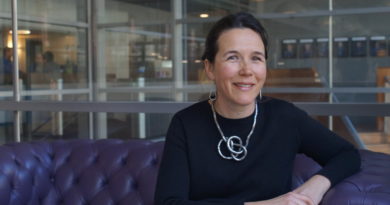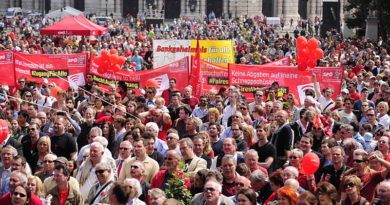How will the city of Brussels look in 2040?
How will the city of Brussels look in 2040? That is one of the questions that architect and urban planner, Paola Viganò, explores in Horizontal Metropolis: A Radical Project, the exhibition that opened at Bozar Centre for Fine Arts on Friday June 15th and that will remain open until the 26th of August. Co-organized with A+ Architecture in Belgium, the exhibition is curated by Paola Viganò, along with Chiara Cavalieri and Martina Barcelloni Corte from the Ecole Polytechnique Fédéral de Lausanne (EPFL).
In Horizontal Metropolis, the visitor dives into the meaning of contemporary diffuse urban planning, which has been hailed by Viganò and other urbanists as the way to the future. In contrast to the vertical metropolis, with its prime examples in New York and Hong Kong, a horizontal metropolis questions the very notion of a compact city with a center, periphery, suburbs, and margins. “What type of metropolis do we want? One that is opposed to the kind of metropolis that expresses a hierarchical verticality in its spatial, social, and political organization,” said Viganò.

The exhibition was shown at the EPFL in Lausanne in 2015, and a year later at the Venice Architecture Biennale. As first conceived, it included urban case studies such as Ville Territoire in Lausanne, the Citta Diffusa in Venice, the Megapolis in Framingham/Boston, and Desakota in China. For the exhibition at Bozar, three Belgian cases have been added, which will be examined during a Summer School program in July where students from different universities (UGent, UCL, ULB and EPFL), will be mentored by Viganò herself and other urban experts. The three Belgian cases are: Gent and the East-Flemish core region; Brussels-West; and the Samber Valley, which is a region between Sambreville and Jemeppe-sur-Sambre, in Wallonie. On display, one can see scale models and axonometric illustrations inspired by the Broadacre City, an idea conceived by Frank Lloyd-Wright in 1935.
In 2010, the Brussels-Capital Region commissioned the Paola Viganò-Bernardo Secchi Studio to analyze the current and future challenges of the Belgian capital. In their proposal, called Brussels-2040 (Studio010), Viganò and Secchi identified a city of which the limits are rather blurred, somewhat uncertain, nonetheless structured by the three valleys of Dender, Senne, and Dijle. The Brussels horizontal metropolis of the future, composed of these three valleys, is meshed by a dense network of public transport. “We will be moving into a future of cities without cars,” said Viganò. “I call them plural mobilities, a concept that will in fact be a collection of different modes of mobility. We will walk more, bike more, the train and the tram, the bus, we will share some form of vehicles, collective taxis. The limit is only our imagination, because once we embrace the modes of this plurality, then we will realize can go beyond this period, very short period, dominated by the car.”
For Viganò, the city of the future is isotropic in character. It maximizes the existing spatial capital, reuses it, and integrates a vision of sustainable spaces. The diffuse nature of the urban-rural symbiosis lying at the core of a horizontal metropolis does not lack any of the functionalities found in conventional compact cities. “In the sprawling city there are also museums, film-makers, photographers, and there is literature. I can no longer accept the idea of a metropolis that is a mechanism of exclusion.”
Viganò knows Belgium well, has worked on projects such as the Main Square (Grote Markt) and cemetery in Kortrijk, the Lamot site in Mechelen, as well as the hostel in Domein de Hoge Rielen in Kasterlee, nominated for the 2015 EU Mies Van der Rohe Award. In 2017, she received the Flemish Culture Prize for Architecture (Ultima Architectuur 2016) for her outstanding achievements. And it is this deep understanding of the Belgian landscape and urban dynamics that she relies on to explain her vision of Brussels as a city of the future. “In our Brussels-2040 the city already seemed to us to be close to a horizontal metropolis. But if it continues to become geared towards certain populations, it will be a lot less horizontal.”
Linked to the exhibition, three debates and panel discussions will take place at Bozar, and Paola Viganò will give a lecture on the Horizontal Metropolis on the 18th of September.



